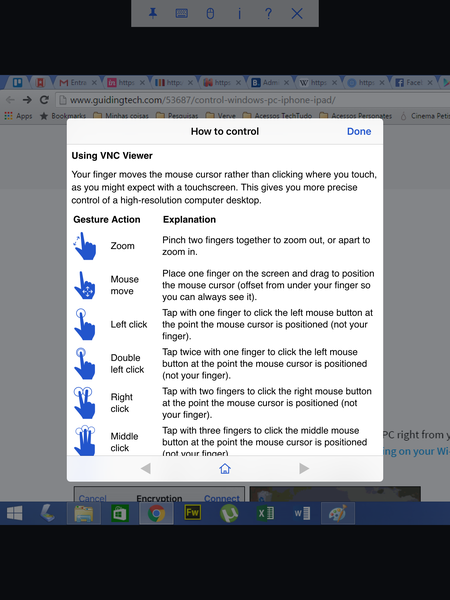

We install the script in a place like /Library/SysScripts on the G5 and don’t want to forget to give it execute rights. If there isn’t a connection going, it first kills any previously started OSXvnc processes and then trys to initiate a connection on the predefined port to the predefined IP address. The script simply checks if there is currently an established connection on the predefined port, in which case it would do nothing. $OSXVNC -connectHost $CLIENT_IP -connectPort $VNC_PORT & # kill previously launched server app and try to poll client.
#XVNC VIEWER FOR MAC WINDOWS#
VNC-client is started on Windows with: C:\>vncviewer -listen 5901 OSXVNC=/Applications/OSXvnc.app/osxvnc-server This IP and the outbound port will have to be configured in this shell script: #!/bin/sh The remaining part of the information-gathering phase is to find out about your IP address at home. To continue with our common scenario, let’s assume port 8200 would be open for outbound traffic. E.g., if you can browse the Internet, port 80 is open for outbound traffic. However, usually there are some ports left open. Some companies have all ports above 1024 open for outbound, outhers are more restrictive. The next things we need to do is find a port that is open for outbound traffic. Lets start on the server-side by installing OSXvnc on the G5. To make it clear how this all works, lets create a common scenario:Ī PowerMac G5 that we want to remotely control is located in the office, behind a tight corporate firewall.Ī laptop we want to use as the controlling machine, runs OS X with Chicken of the VNC installed, or Windows with a VNC Viewer. A really short shell script installed as a daemon however helps us to work around this issue. Now, there is a little problem that still needs to be resolved: OSXvnc needs user interaction (clicking the add button), to make it initiate the connection. Obviously, to make this work, the vncviewer would have been started in listening mode on the machine with the given IP. OSXvnc allows you to enter an IP address and by clicking the Add button, let the vnc server call the client (the vncviewer). In this case, like with almost all clients, the viewer initiates the communication. That machine starts to listen for request from a vncviewer, on the predefined port. Usually, you open port 5900 on the machine you would like to remotely control. OSXvnc to the rescueįortunately, there is the OSXvnc open source project, while providing only a subset of Apple’s ARD, it has the nice feature, allowing the server to make the initial communication request. However, opening a server port is usually unacceptable and not tolerated by your IT folks – for a good reason, I might add.
#XVNC VIEWER FOR MAC MAC#
VNC is one of the very few – if not the only – cross platform solutions, allowing to access a Mac from a Windows box or vice versa. By doing so, your Mac starts listing on port 5900 and you could access it via any VNC viewer, like Chicken of the VNC (for the Mac), or RealVnc, or TightVnc (on Windows). You could simply open System Preferences / Sharing, enable ARD (Apple Remote Desktop) and check the VNC viewer checkbox.

Accessing your Mac remotely isn’t really that difficult, if it weren’t for your resident IT-Department.


 0 kommentar(er)
0 kommentar(er)
